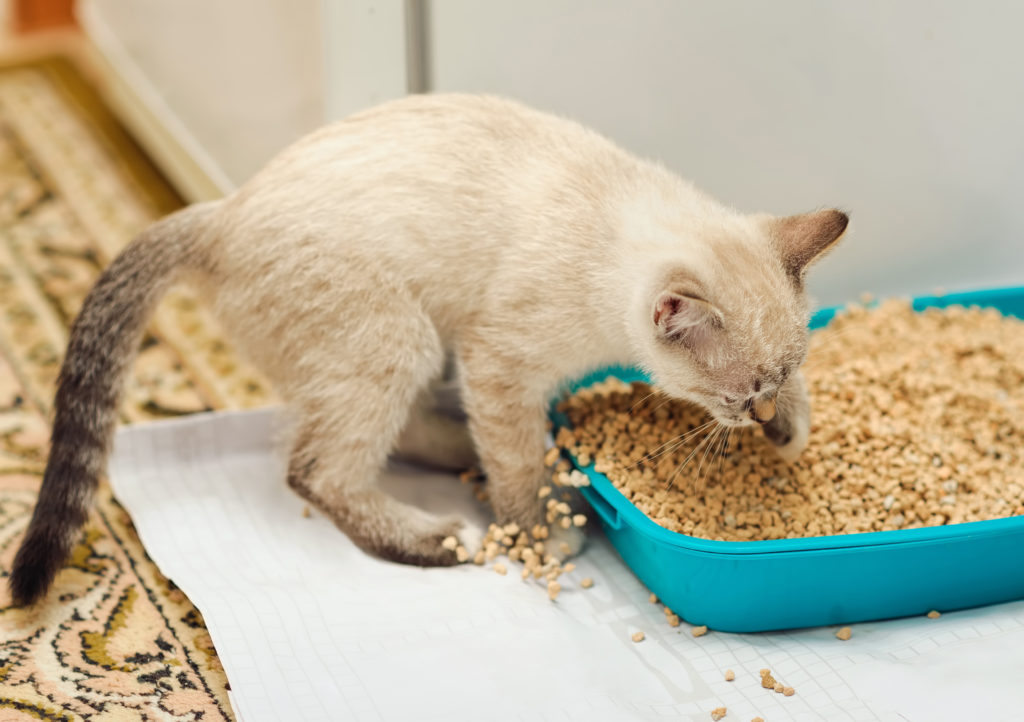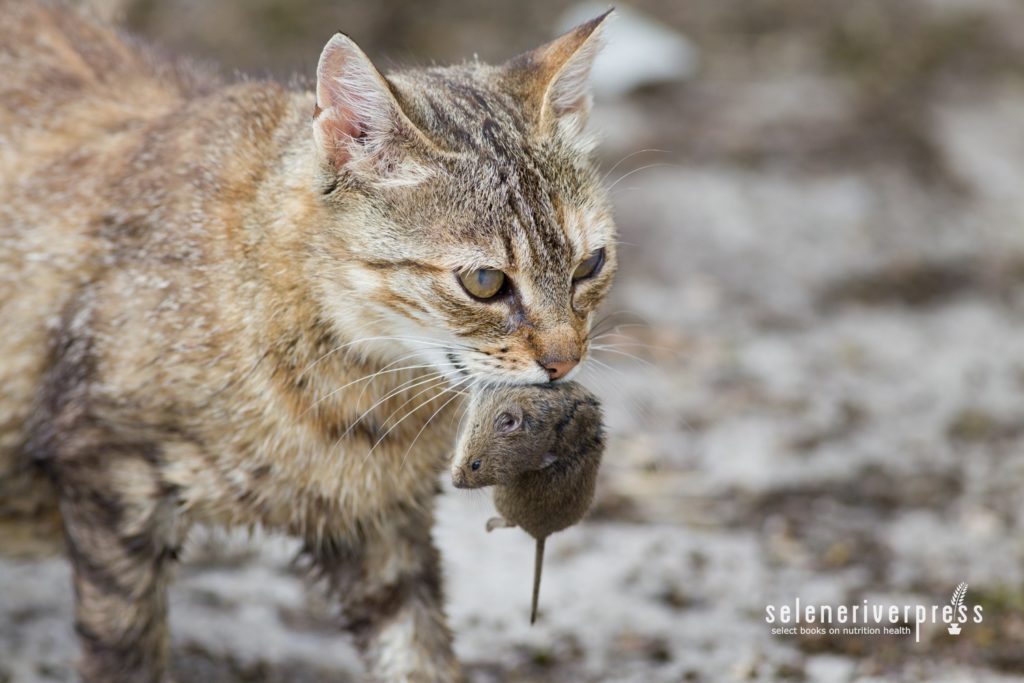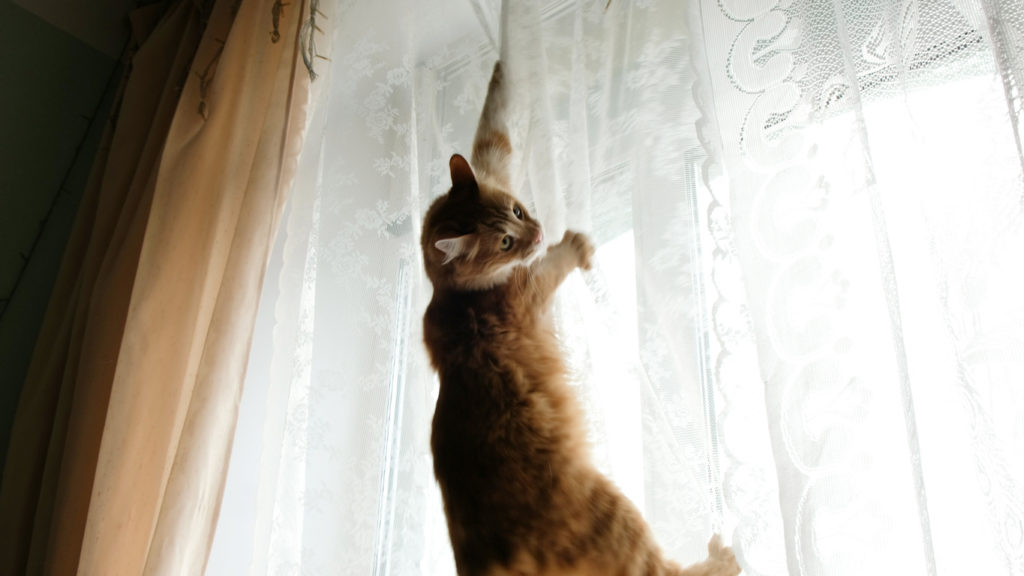This must be one of the most common questions I get from cat owners. Lions, tigers, and other big cats, just like the modern house cat, are all true carnivores. It therefore follows that we may better understand certain behavioral traits of household cats today by discussing how they mimic their ancestors in other ways as well.
Why does my cat bury their poop?
Dogs bury bones, cats bury poop. Hiding waste is a natural feline instinct, but not just because they’re obsessed with cleanliness. In fact, it has more to do with marking their territory. Cat poop may all smell the same to us, but cats themselves have no trouble detecting the distinct chemical scent markers known as pheromones in their urine and feces.
If you watch wildlife documentaries, you might already know that dominant cats such as lions, tigers, leopards, or jaguars will often leave their feces or urine exposed as a way of claiming a particular territory. On the other hand, smaller, weaker, or more submissive wild cats will bury their waste because they don’t want to challenge dominant cats. Also, by concealing their waste, they’re concealing their own whereabouts at the same time.
This leads to a similar question. Why doesn’t my cat use their litterbox? There can be many reasons. Your cat may be claiming his territory, or perhaps they never learned to bury their poop, or they find something displeasing about their litterbox. There might even be an underlining medical condition to consider. (If this is the case, consult your veterinarian for further testing and examination.)
Why does my cat like to suck on blankets, fabrics, or my fingers?
My best friend growing up had many cats. Clyde, her favorite, used to suck on her earlobes. He seemed hypnotized as he held on to her neck and suckled on her lobe. Even today, she has a cat that suckles on a stuffed moose. It’s the cutest thing you’ve ever seen, but she’s curious about why her cats do it. My friend obviously adopts sensitive kittens, who can grow into cats that suck fabric or their owner’s fingers or ears. These behaviors remind the cat of being safe and surrounded by her mother and littermates.
One cause of excessive suckling can be early separation from mom. Ideally, kittens shouldn’t be weaned earlier than six weeks. However, we see kittens as young as four to six weeks in some shelters. According to the ASPCA, suckling can also be a sign of stress, compulsive behavior, or even just happiness or contentment. It’s a hard behavior to nail down. If you’re not concerned about suckling and your cat continues to be soothed this way, I encourage you to make sure the fabric or stuffed animal doesn’t have loose threads that your cat could wrap around their tongue or teeth, and also be sure it’s free of any objects your cat can swallow.
Why does my cat knead?
Kneading (or “making biscuits”) is when the cat pushes in and out with its front paws, alternating between left and right. This is a very common behavior in domestic cats. They’re fond of kneading soft surfaces, including pillows, blankets, other animals, and even people. As we discussed earlier, some adult cats may knead when they feel happy or content because they associate the motion with the comforts of nursing. For that reason, kneading often takes place at the same time as suckling.
Another theory holds that kneading has been passed down from cat ancestors who would pat foliage down to create a soft surface for sleeping or a nest for giving birth. Nowadays this behavior may simply be an instinctual part of settling down. But on the other hand, some conjecture that kneading is yet another way for cats to scent and claim their area. (Did you know that cats have scent glands in the pads of their paws?)
Why does my cat bring dead animals into the house?
Believe me, they have their reasons. In the wild, cat mamas are the providers and caregivers. They teach their young how to hunt and eat their food by bringing home dead or injured prey. By leaving a dead animal on the back porch or bringing it into the house, your cat is acting out its natural role as a mother and teacher. Lucky you, as her loving owner, you represent her surrogate family that she loves and wants to care for.
Also keep in mind that cats are true carnivores, and they need meat as part of a healthy diet and life. It’s extremely important that all indoor cats (who cannot go outside to hunt) be given Standard Process Feline Whole Body Support. This supplement contains organs and glands that provide balanced nutritional support for daily maintenance, as well as cellular nutrition for many endocrine tissues.
Why does my cat flick their tail?
Cats flick their tails for many reasons, but often because they’re excited—which is another way of saying that they feel agitated, playful, or up to something. If they’re feeling playful, you’ll most likely see a tail that waves smoothly. Some biologists think this motion mesmerizes or distracts potential prey in the wild.
Though tail-flicking can include the entire tail, it often involves a bent or articulated tip. When cats are agitated, they’ll thump and flick their tails intermittently, and then more vigorously the more agitated they get. It may be warning sign that they’re about to strike or dash out of the room.
These questions are just the big ones! Most cat owners know there’s no shortage of odd behaviors to wonder about. After all, cats are a popular choice for pets—the American Veterinary Medical Association says that about 25 percent of U.S. households claims one of these adorable, furry friends as a family member. Sure, cats are mischievous, and they do weird things. But any cat lover will tell you that their cat’s unique personality is the very reason they love them so much.
To borrow the words of Ernest Hemingway, “A cat has absolute emotional honesty: human beings, for one reason or another, may hide their feelings, but a cat does not.”
Images from iStock/Jevtic (main), MihailUlianikov (cat digging), Elena Perova (cat on the curtain).



